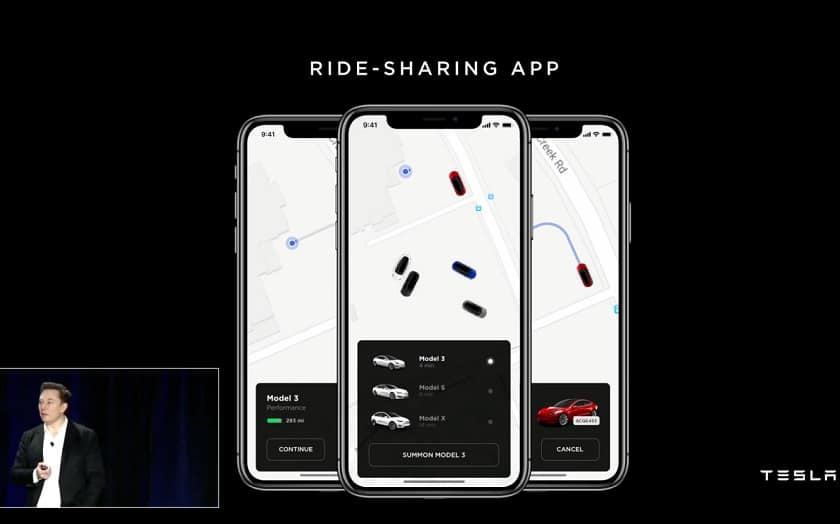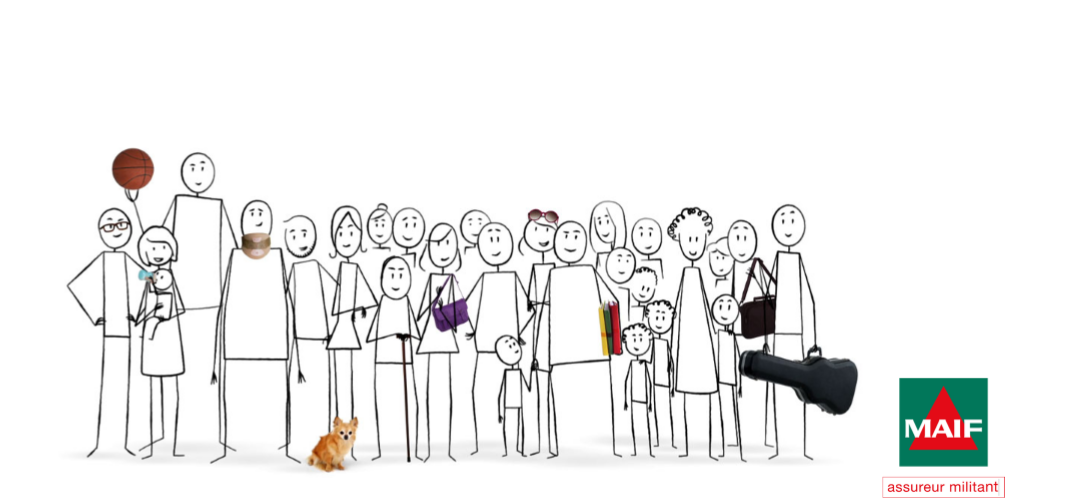
Identify situations where voice interactions that are relevant to insurance-related services and how these interactions can be designed to be widely understood and adapted.
Introduction and brief
Demand
For this project, we had to identify situations where voice interactions that are relevant to insurance-related services and how these interactions can be designed to be widely understood and adapted.
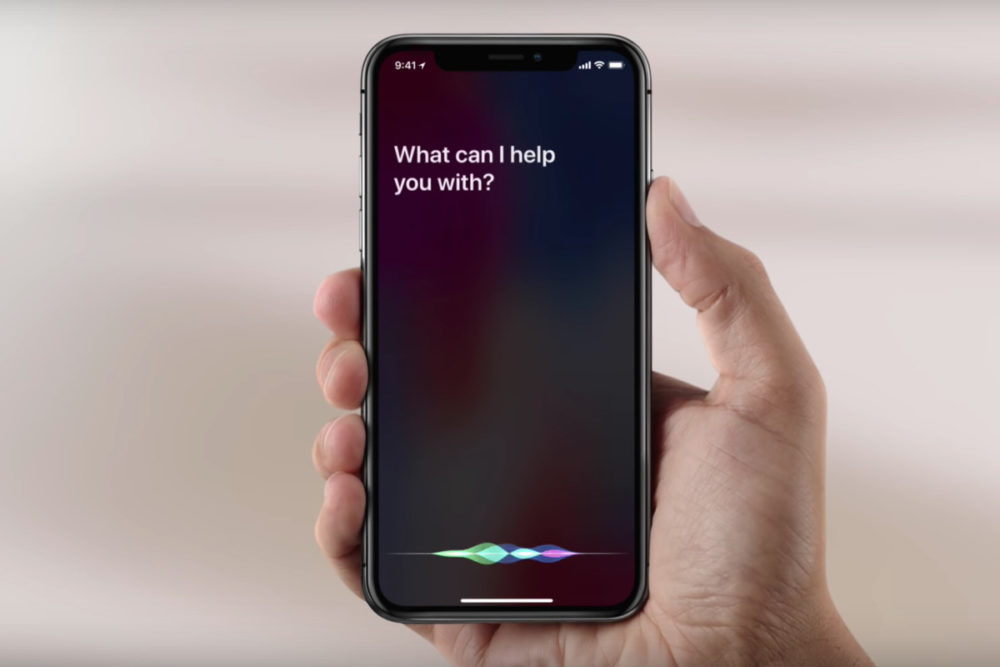
Positioning
After various researches we decided to focus more precisely on vehicle, home and life insurance with the focus on the connected residential mobility-sharing service. This consists of providing all types of transport adapted to all types of distances in parks equipped with chargers for residences. Since this is a project for the future, we look in perspective about 5 to 10 years.
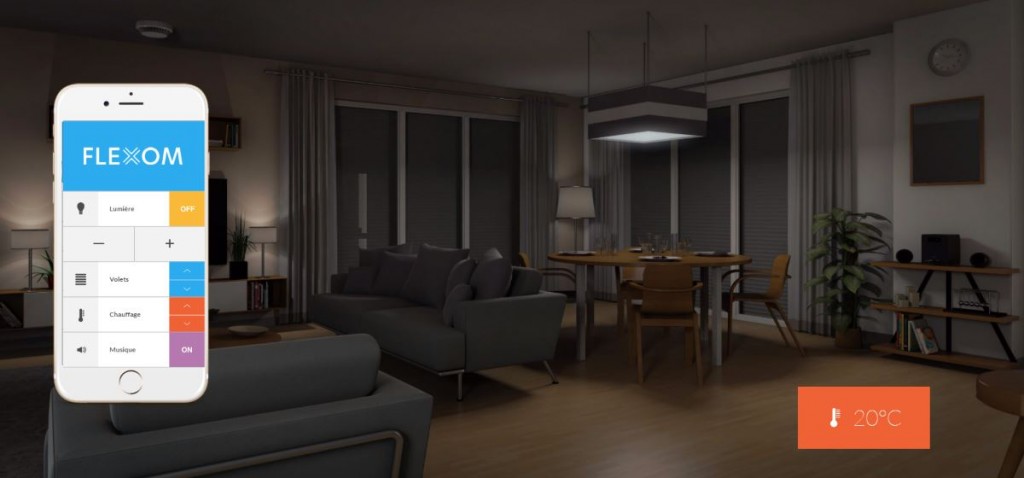
Process
Research
Car-sharing was democratized in 2014 and is therefore still in the experimental phase. The principle is to dedicate a shared vehicle for the exclusive use of residents of a building for non-motorized residents for everyday travel. This will encourage its users to diversify their modes of transport.Today, more and more companies such as Bouygues immobilier are setting up turnkey apartments that are fully connected to certain forecasting and anticipation systems.
- 4 years is the average duration of a rental in France
- 30 is the number of connected objects per French household by 2020
- 7.1% of homes are connected in France
- 19% of homes that are connected in Sweden
- 4 years is the average duration of a rental in France
- 30 is the number of connected objects per French household by 2020
- 7.1% of homes are connected in France
- 19% of homes that are connected in Sweden
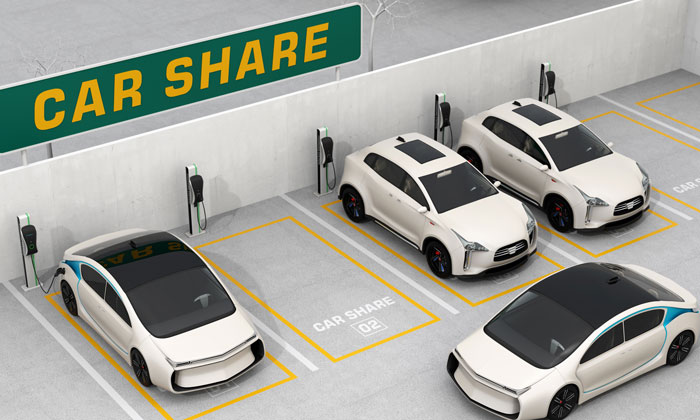
Our promise
The aim of our project is to provide transports for a residence, a building, a neighbourhood as well as to create a collaborative network for these people.
MAIF could create a new insurance offer to insure not only a user for his car, his home, his life but for the entire residence and all the services it offers (electric scooters, cars, housing).
The service would also help prevent potential risks related to housing (water leaks, electricity consumption) if you go far away. The objective would therefore be to simplify everyone's life. Through this project the young population is targeted because it is the main applicant for a rental offer, always wanting the best and less interested in ownership.
MAIF could create a new insurance offer to insure not only a user for his car, his home, his life but for the entire residence and all the services it offers (electric scooters, cars, housing).
The service would also help prevent potential risks related to housing (water leaks, electricity consumption) if you go far away. The objective would therefore be to simplify everyone's life. Through this project the young population is targeted because it is the main applicant for a rental offer, always wanting the best and less interested in ownership.
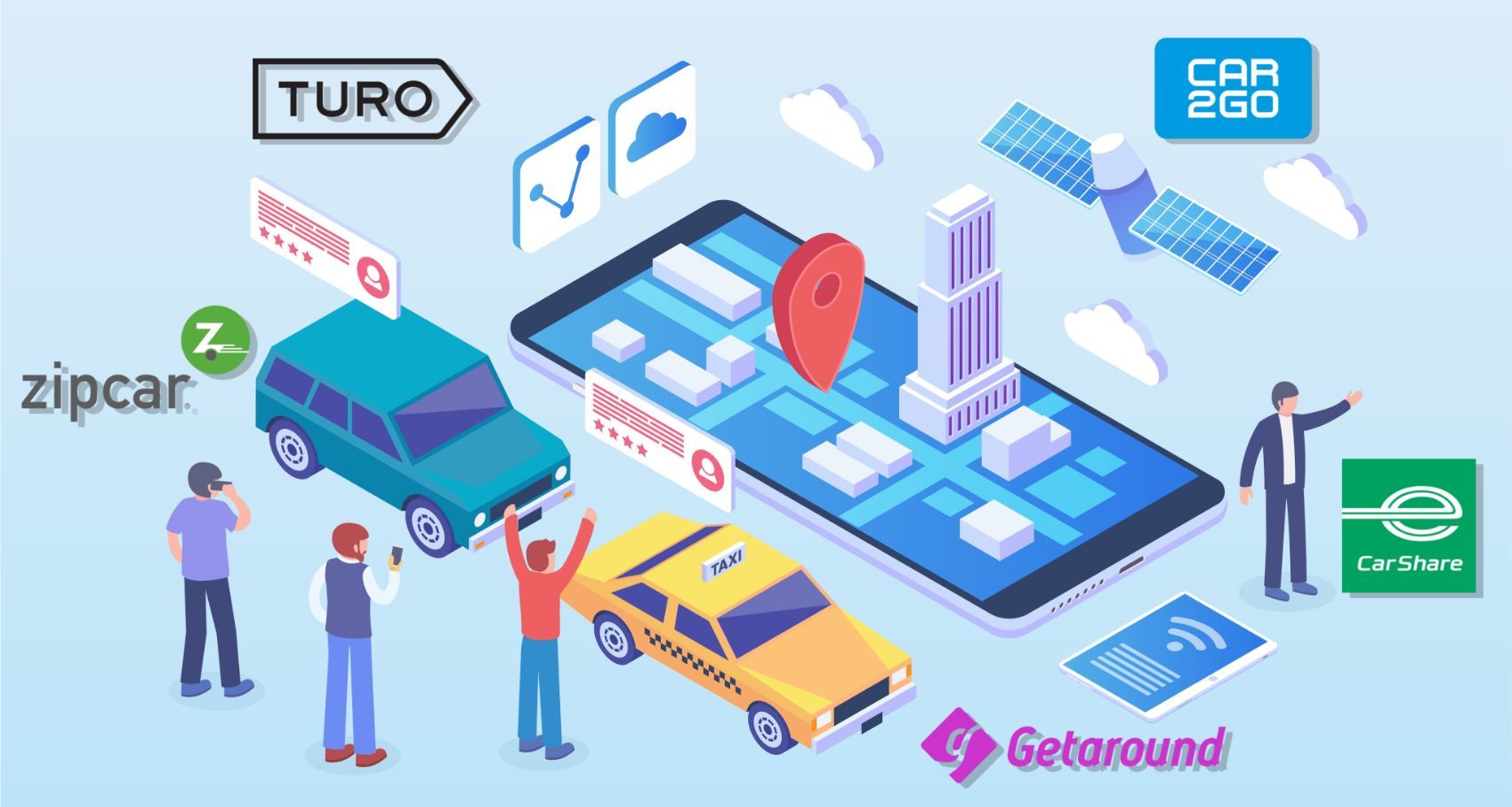
For whom?
Our public would rather be oriented towards people aged 20 to 40 years old, either students at the end of their studies, which would therefore potentially be there for a limited period of time, or small families looking for an apartment while they are looking for a house, for example.
The duration envisaged would be a maximum of 5 years based on studies carried out on behalf of tenants in recent years.
The duration envisaged would be a maximum of 5 years based on studies carried out on behalf of tenants in recent years.
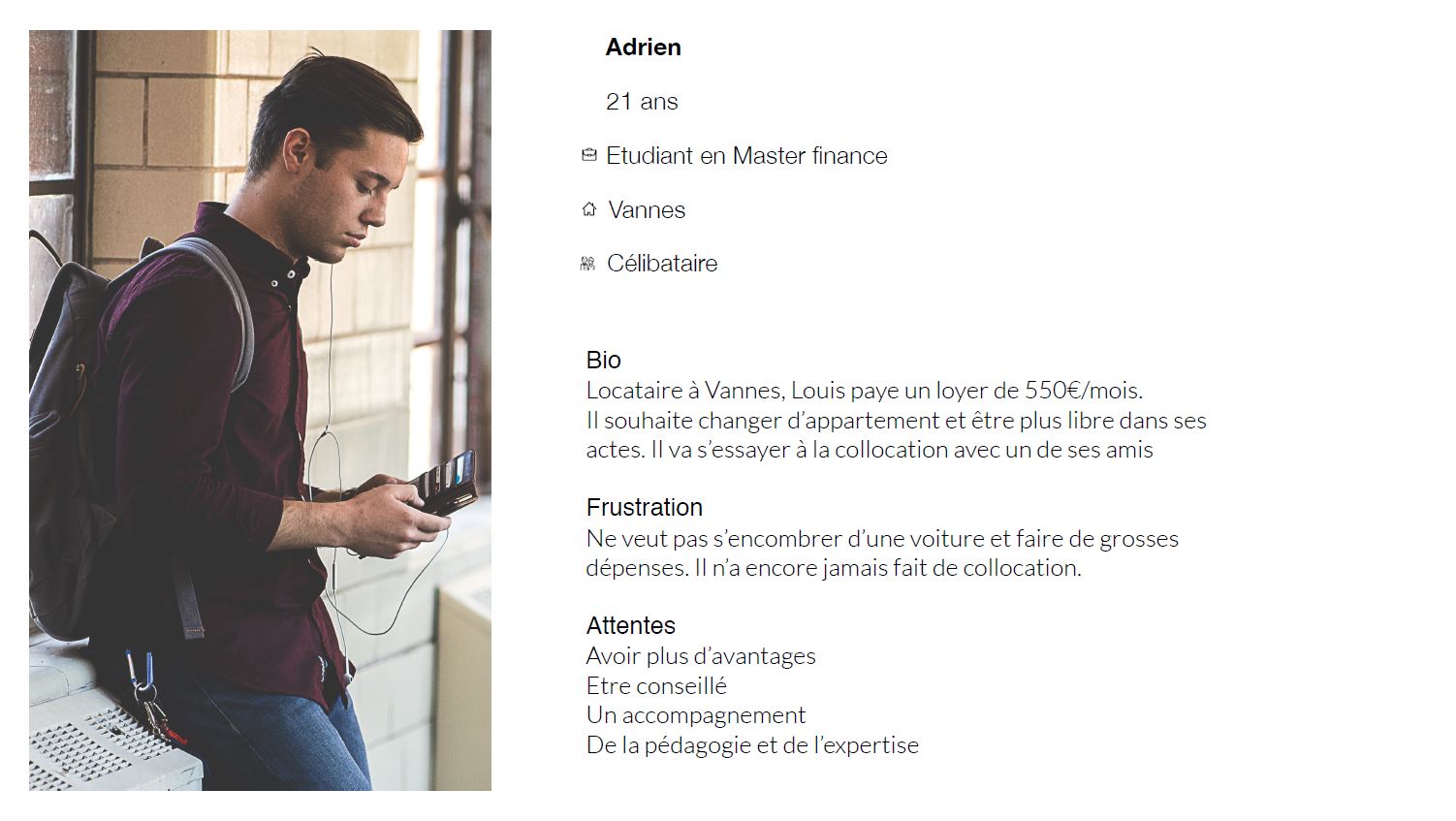
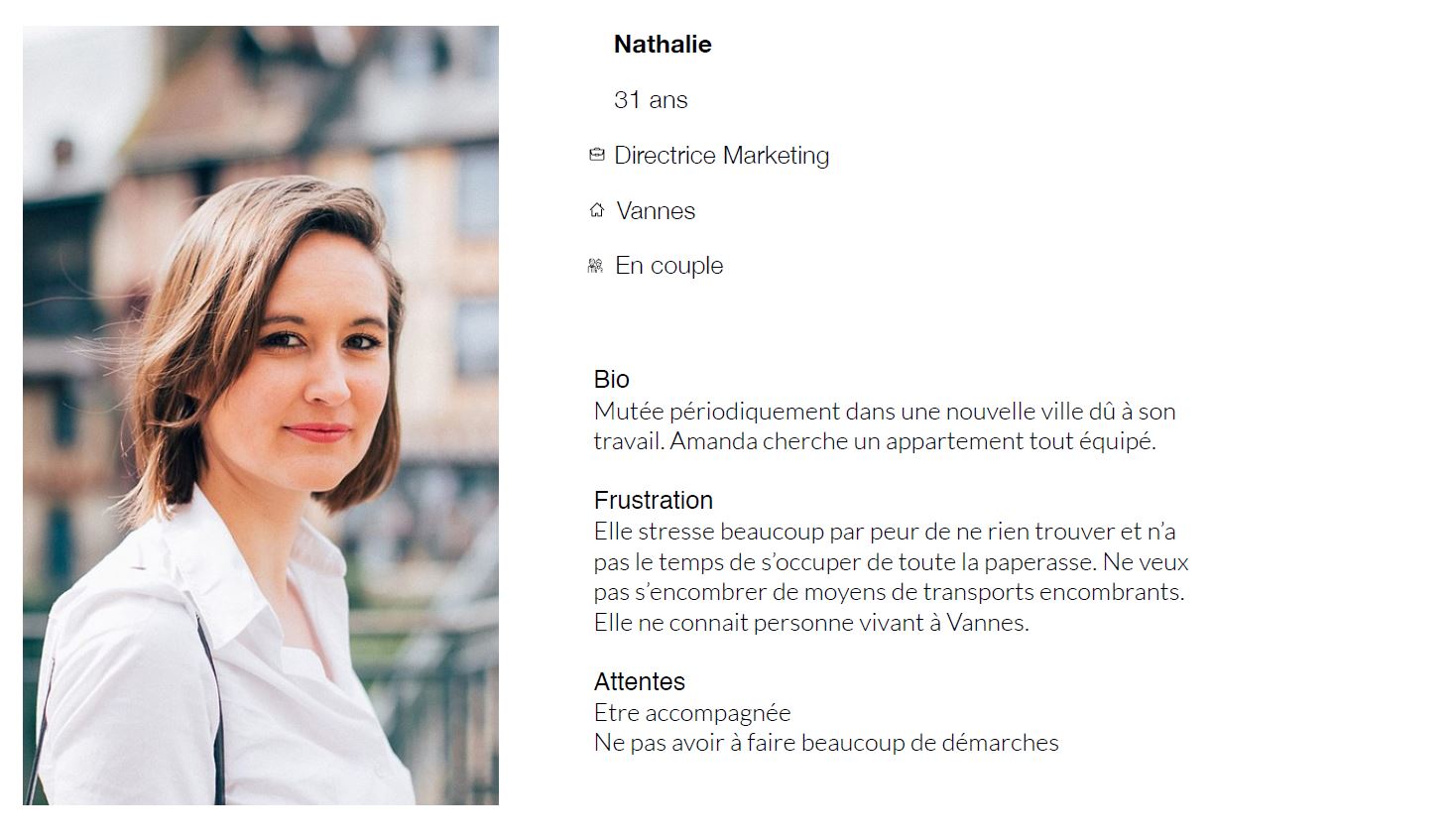
Scenarios
In order to understand and offer the best user experience it was useful to decay scenarios, these scenarios allowed us to create a typical path that the user could follow through the final solution. Moreover, thanks to these different scenarios, we were able to highlight the potential emotions or thoughts that the user will evoke depending on the different actions he would make.
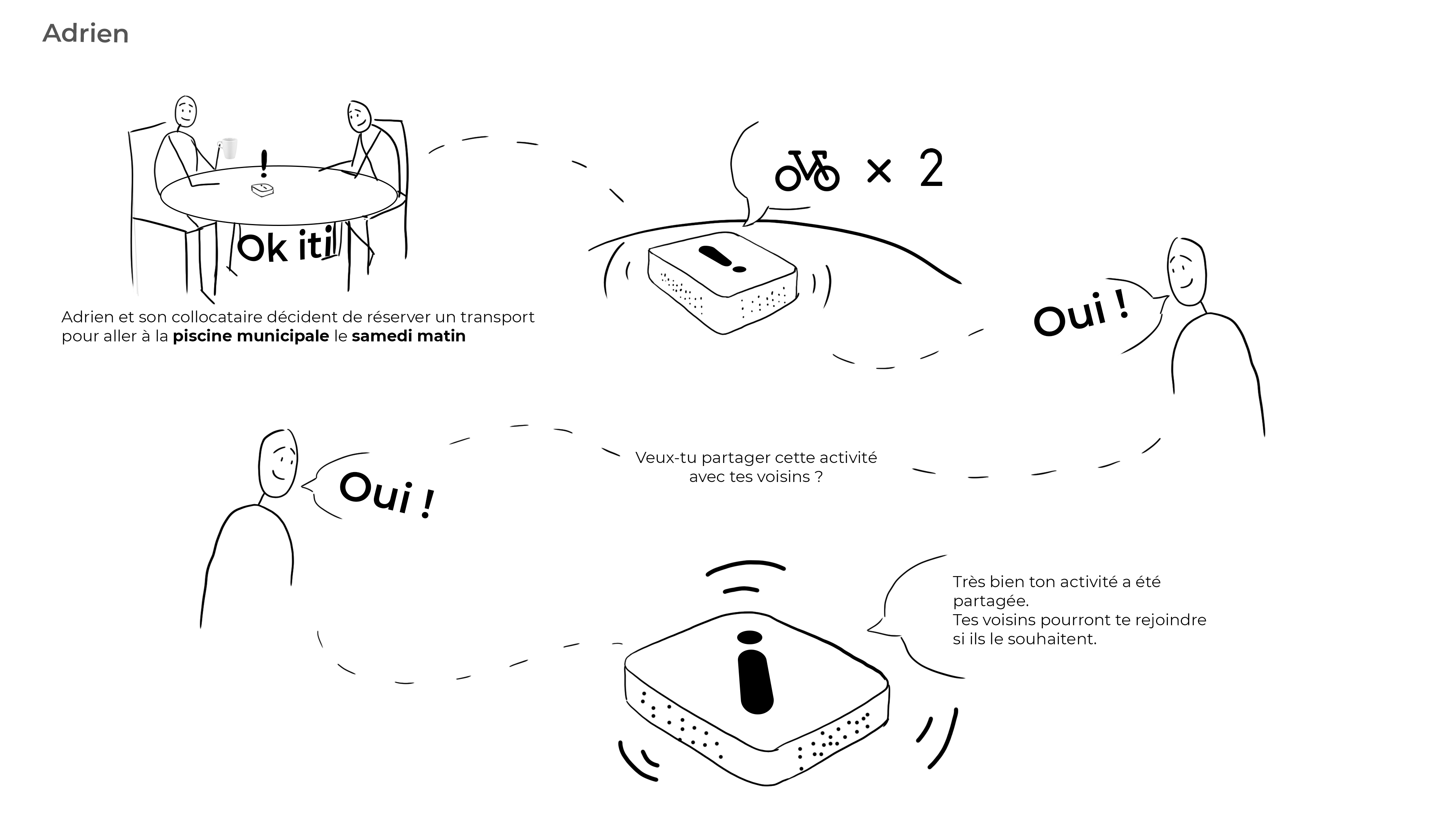
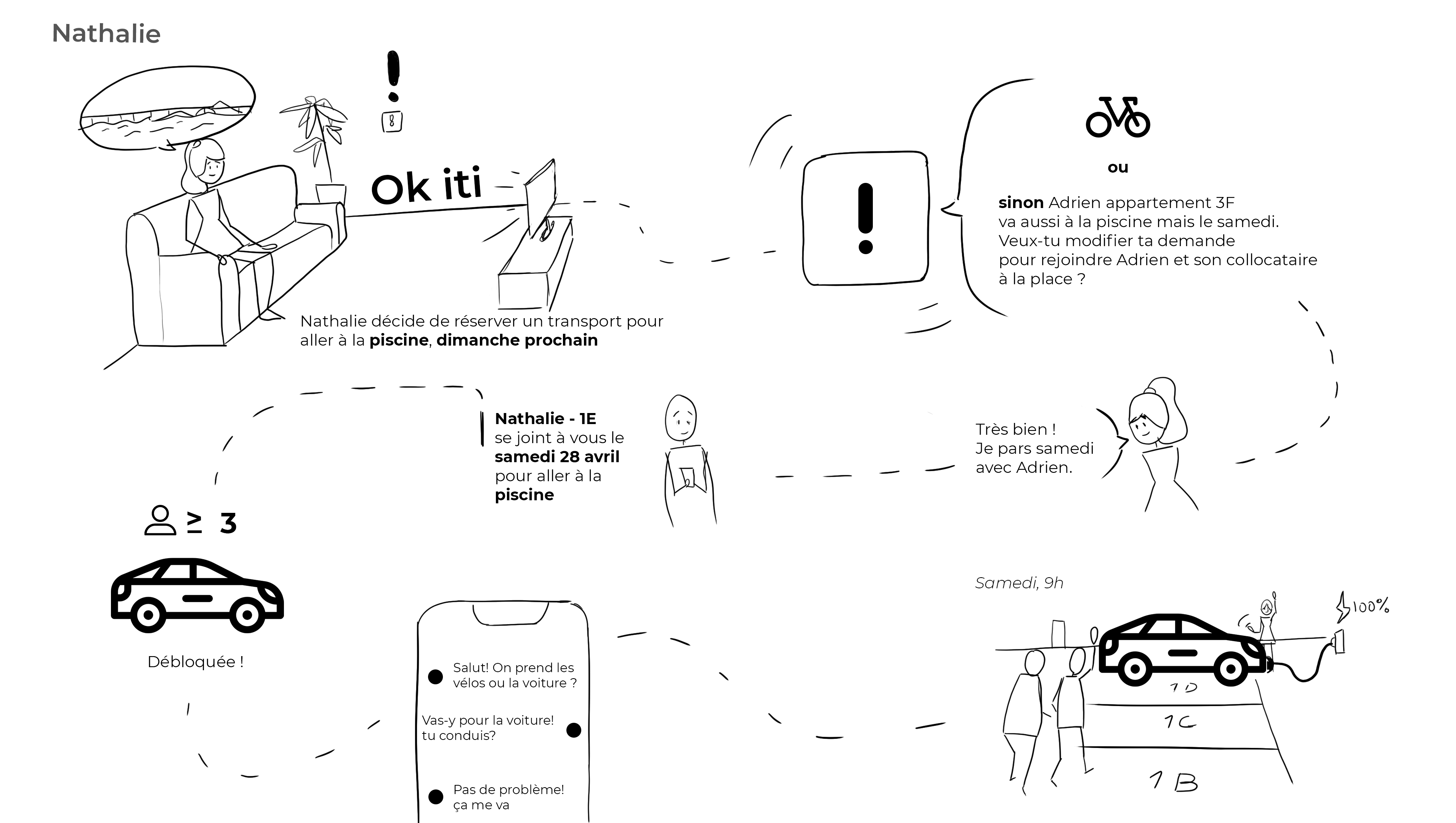
Natural User Interface
The vocal
In order to integrate the Vocal into this project, many researches on this medium have allowed us to draw many points.
Each voice assistant has its own way of communicating with its user, which is why a thorough monitoring and research phase has allowed us to learn more about this device. In order to better fit with our work axis which is the connected residence and eco-share system, it was essential for us to ask ourselves and users the right questions.
Each voice assistant has its own way of communicating with its user, which is why a thorough monitoring and research phase has allowed us to learn more about this device. In order to better fit with our work axis which is the connected residence and eco-share system, it was essential for us to ask ourselves and users the right questions.
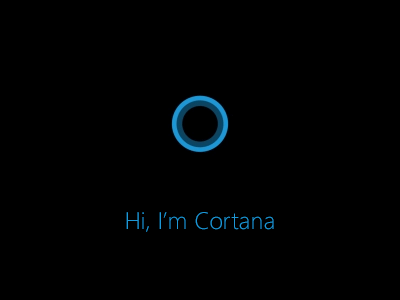
Researches
Not knowing the world of vocal assistants well enough or sound in general, we had the opportunity to meet a sound designer who taught us and explained how sound "works". Contrary to our expectations, it was much more complex than we thought.
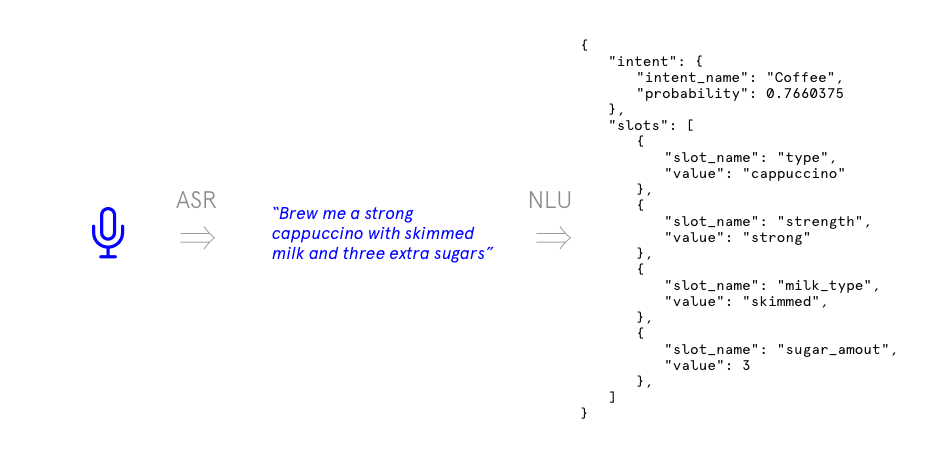
The "Who am I?" presence?
First of all, we did a lot of researches on which type of voice would be most suitable.
"Serious" language or a "child" language for example. All this was decided- "The voice must be human?"
- "A male or a female voice?"
- "A robotic voice?"
We have therefore decided to focus on a total freedom for the user. This means that it will be up to him to choose which type of voice he will choose for his assistant. In a second step we focused on the type of language that the voice assistant should have.
- "Opt for a sustained language?"
- "A familiar language will be better?"
The voice will adapt intelligently to the person speaking to it, if it is more a "young" language, a and worked with a sound designer who helped us a lot on this part
"Serious" language or a "child" language for example. All this was decided- "The voice must be human?"
- "A male or a female voice?"
- "A robotic voice?"
We have therefore decided to focus on a total freedom for the user. This means that it will be up to him to choose which type of voice he will choose for his assistant. In a second step we focused on the type of language that the voice assistant should have.
- "Opt for a sustained language?"
- "A familiar language will be better?"
The voice will adapt intelligently to the person speaking to it, if it is more a "young" language, a and worked with a sound designer who helped us a lot on this part
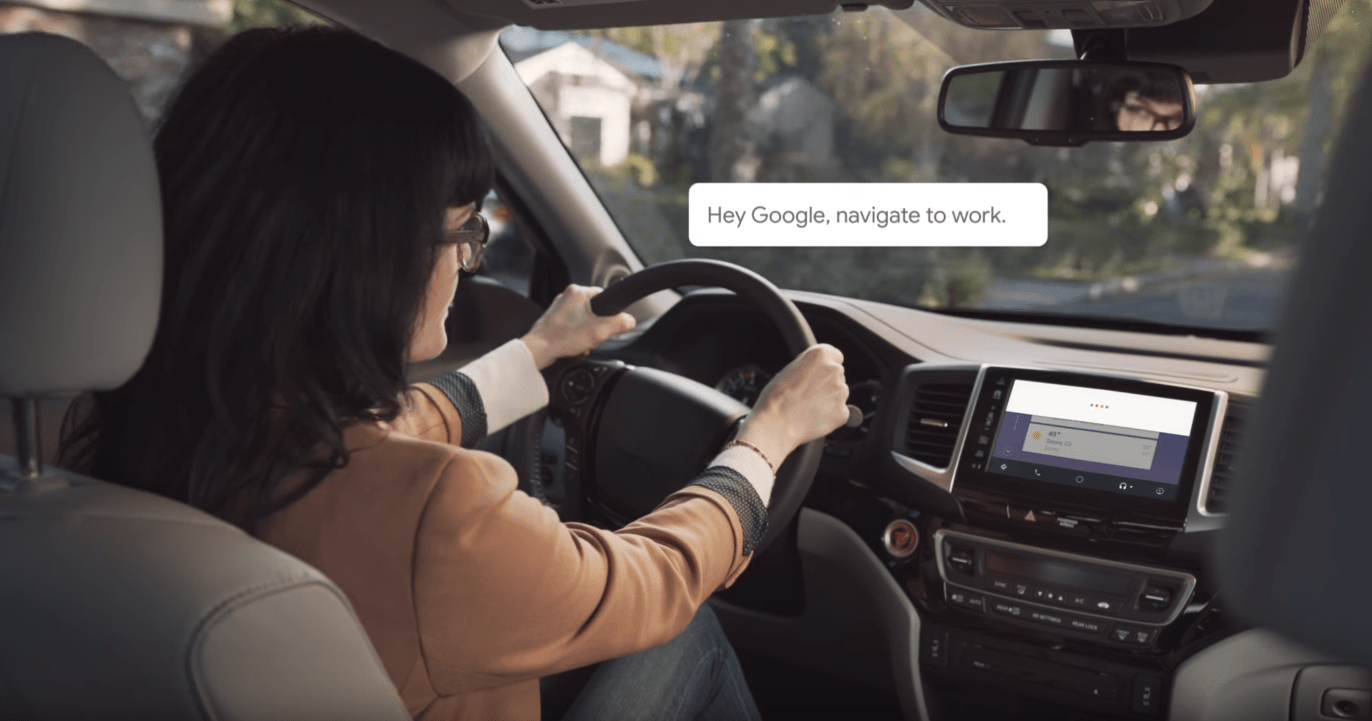
A communicative code
Another point that we have noted and therefore essential for voice assistants is the "communicative code". Each voice assistant has its own communication code.
So we decided to assign "emotions" to our voice assistant as Microsoft does for Cortana. This brings a more human side and allows to create a "link" between the user and the assistant.
So we decided to assign "emotions" to our voice assistant as Microsoft does for Cortana. This brings a more human side and allows to create a "link" between the user and the assistant.
The voice assistant
We really wanted to create more than just a simple vocal assistant but really a "buddy" or "roommate" since this device would be found in connected apartments and therefore would have a whole ecosystem of its own.
The device would be a small box that could be moved around the apartment. On this box an Oled screen to limit the energy consumption would be placed on it and therefore on which we would find the different interactions of iti, our vocal assistant.
The device would be a small box that could be moved around the apartment. On this box an Oled screen to limit the energy consumption would be placed on it and therefore on which we would find the different interactions of iti, our vocal assistant.
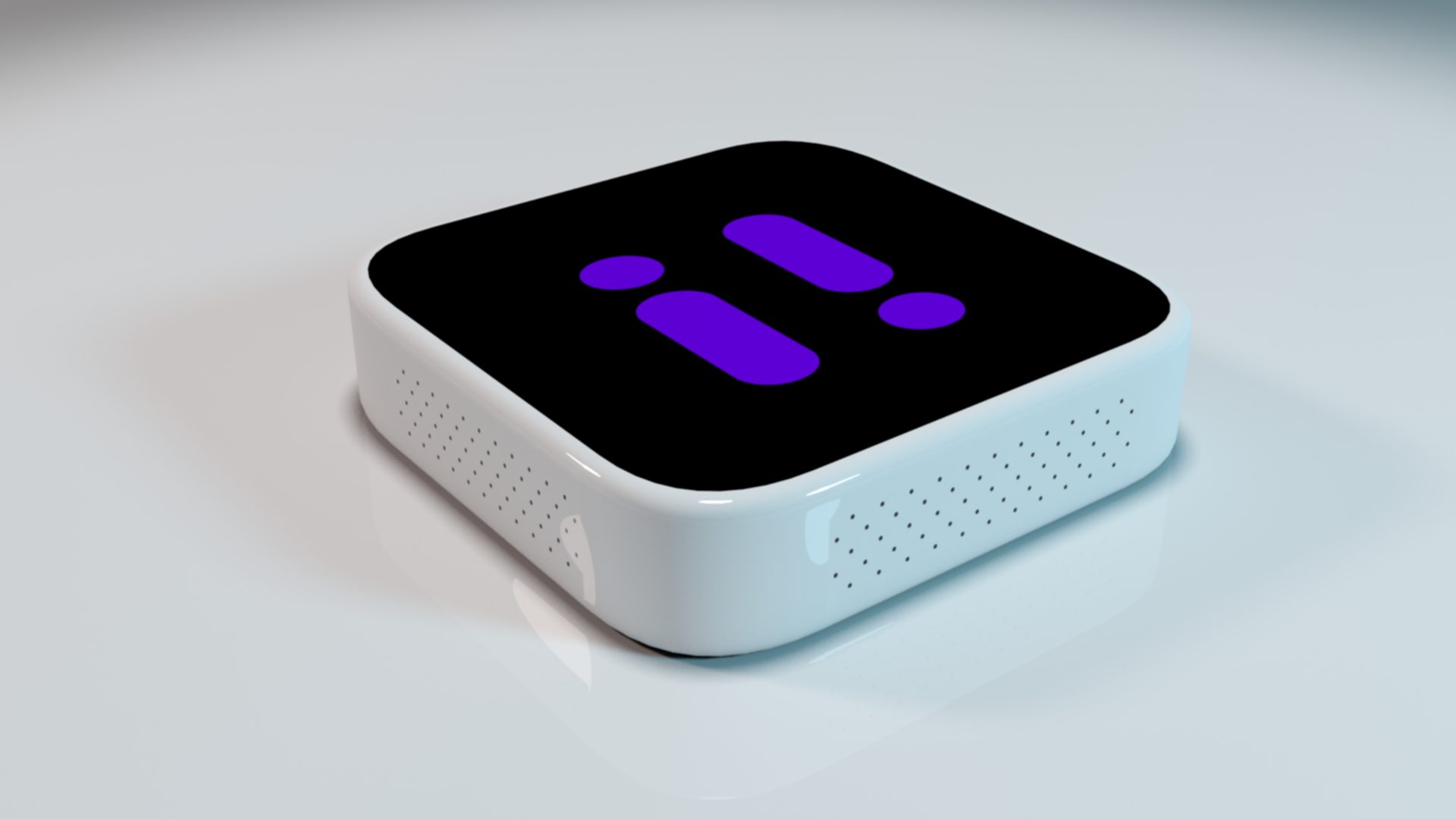
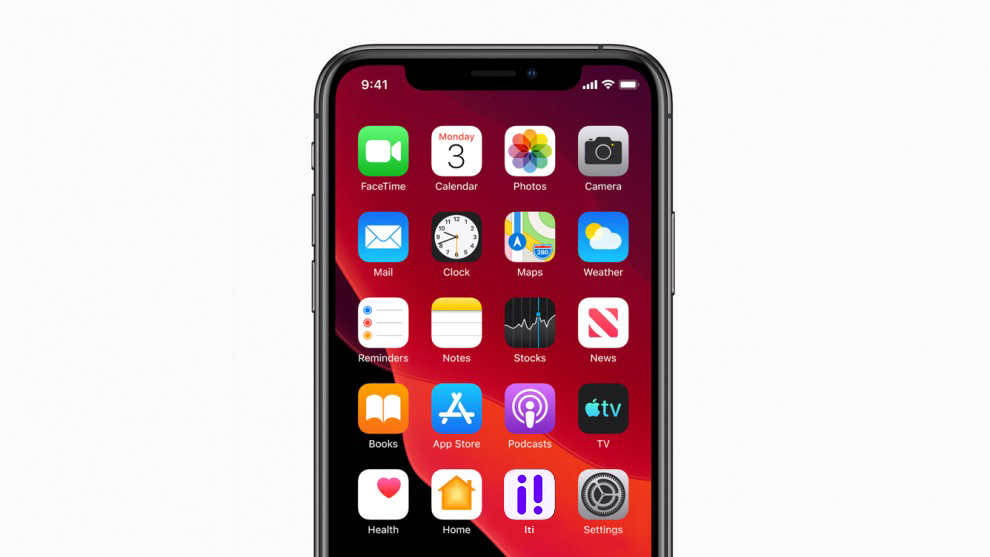 $
$
The application
The objective of an application directly connecting to the voice assistant is to continue the experience in a more free way and outside of home. In addition, the objective would be to provide more accurate informations than the voice assistant. Let us recall the objective which is to create an eco and car-sharing system, which is why everything becomes easier from an application.
Researches
In order to properly link the voice assistant to the application without complicating the experience we made a series of wireframes. The advantage of this step is that it allows us to focus on features, behaviors and content priority. Once we have established these things, product design becomes much easier.
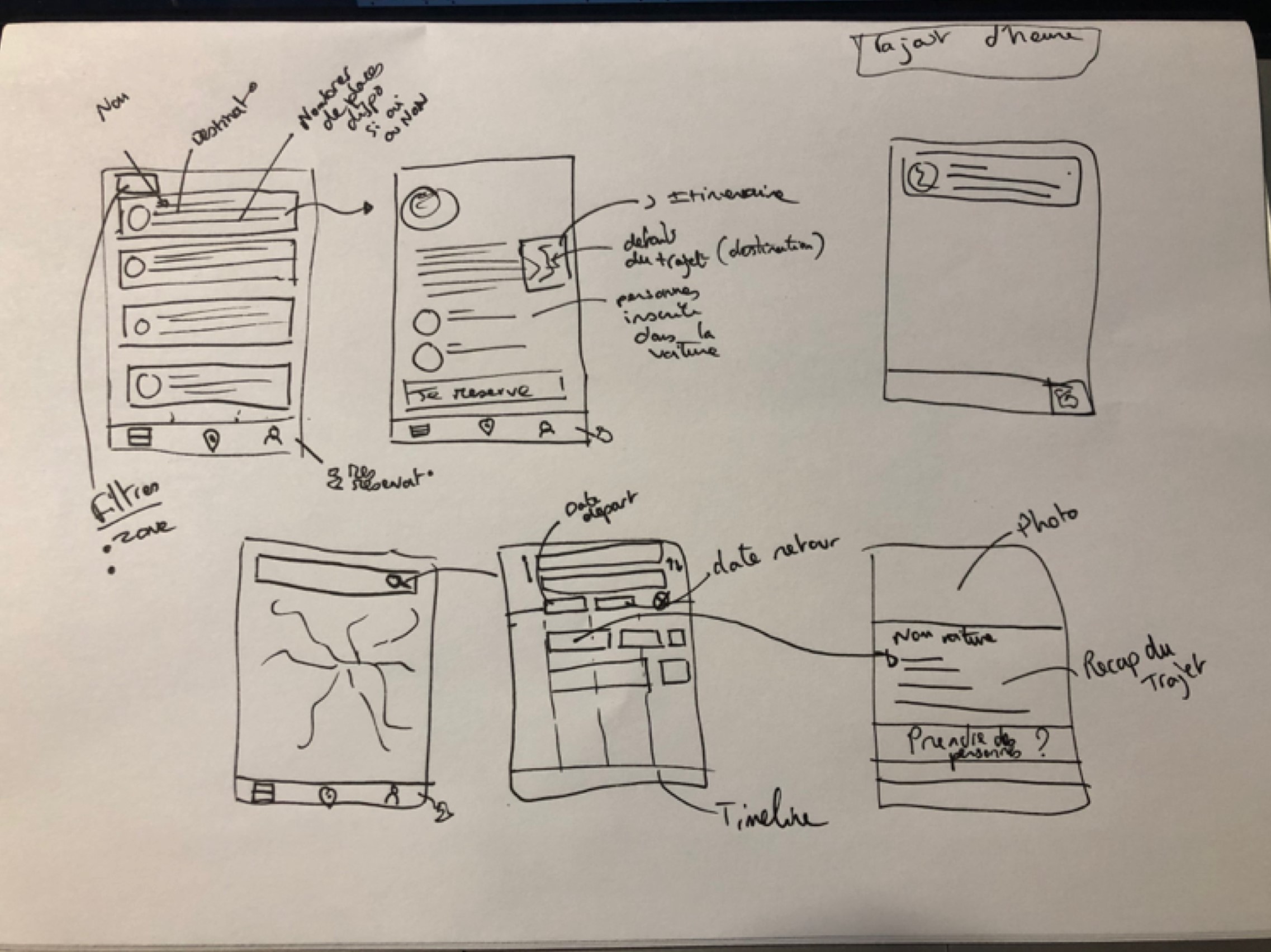
Find my way
First of all it is possible to find the best route that suits you via an "announcement" page where each person shares the route they will take with various information specifying and informing the trip. By clicking on the route announcement a description of the person and the route is displayed.
Voice search via the application is also possible. It is with short shared trips and where it will be easy to create a real community. From the homepage the necessary information has been displayed such that the type of transport used, the number of remaining places or simply the distance to the place where the user wishes to go.
It is also possible to be able to discuss directly via the application to create the first link of the community. A chat has therefore been set up in a simple and quick way.
It is also important that each person is reassured and therefore a profile section with various documents to check reinforces security. So you know who you're travelling with.
Voice search via the application is also possible. It is with short shared trips and where it will be easy to create a real community. From the homepage the necessary information has been displayed such that the type of transport used, the number of remaining places or simply the distance to the place where the user wishes to go.
It is also possible to be able to discuss directly via the application to create the first link of the community. A chat has therefore been set up in a simple and quick way.
It is also important that each person is reassured and therefore a profile section with various documents to check reinforces security. So you know who you're travelling with.

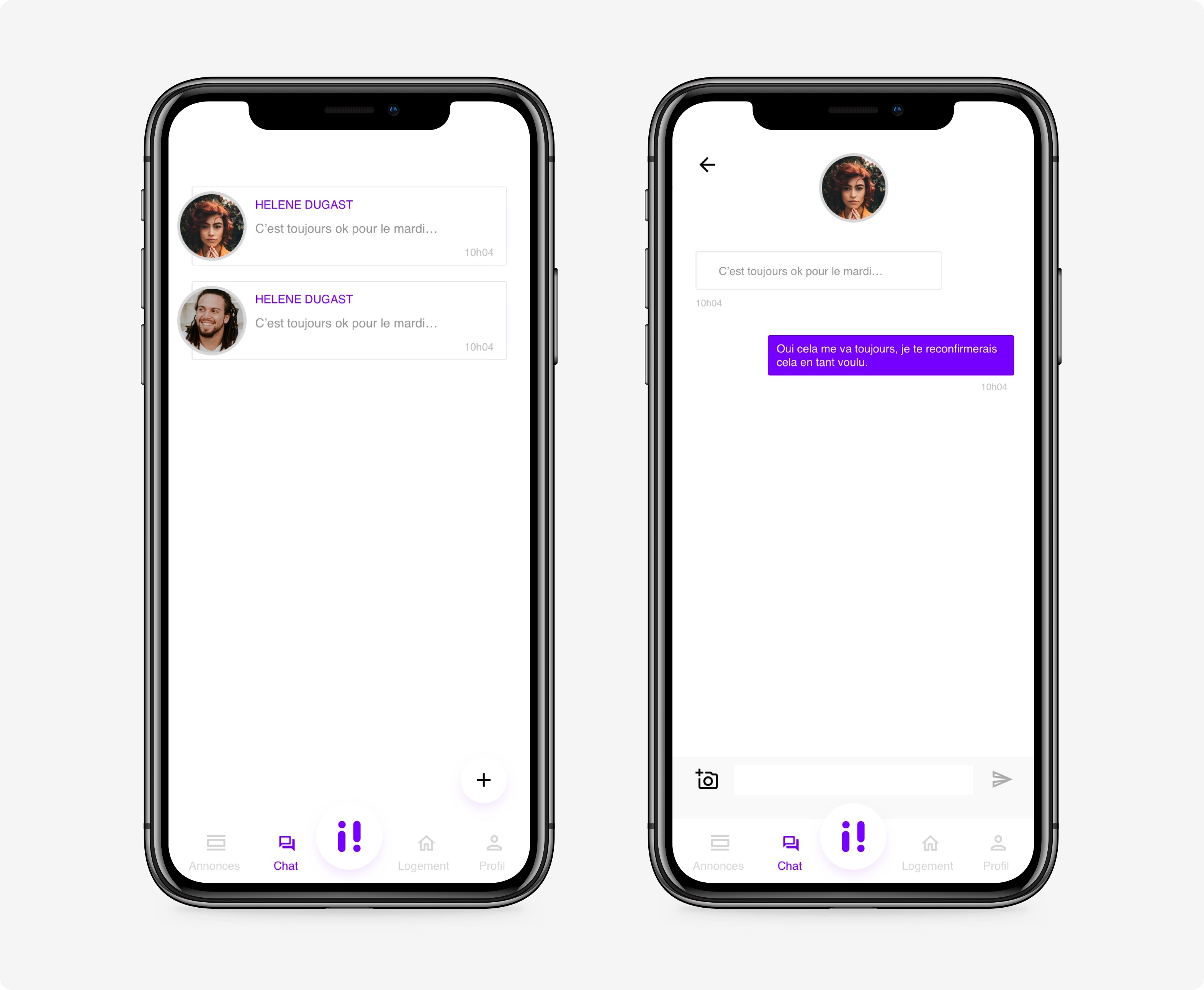
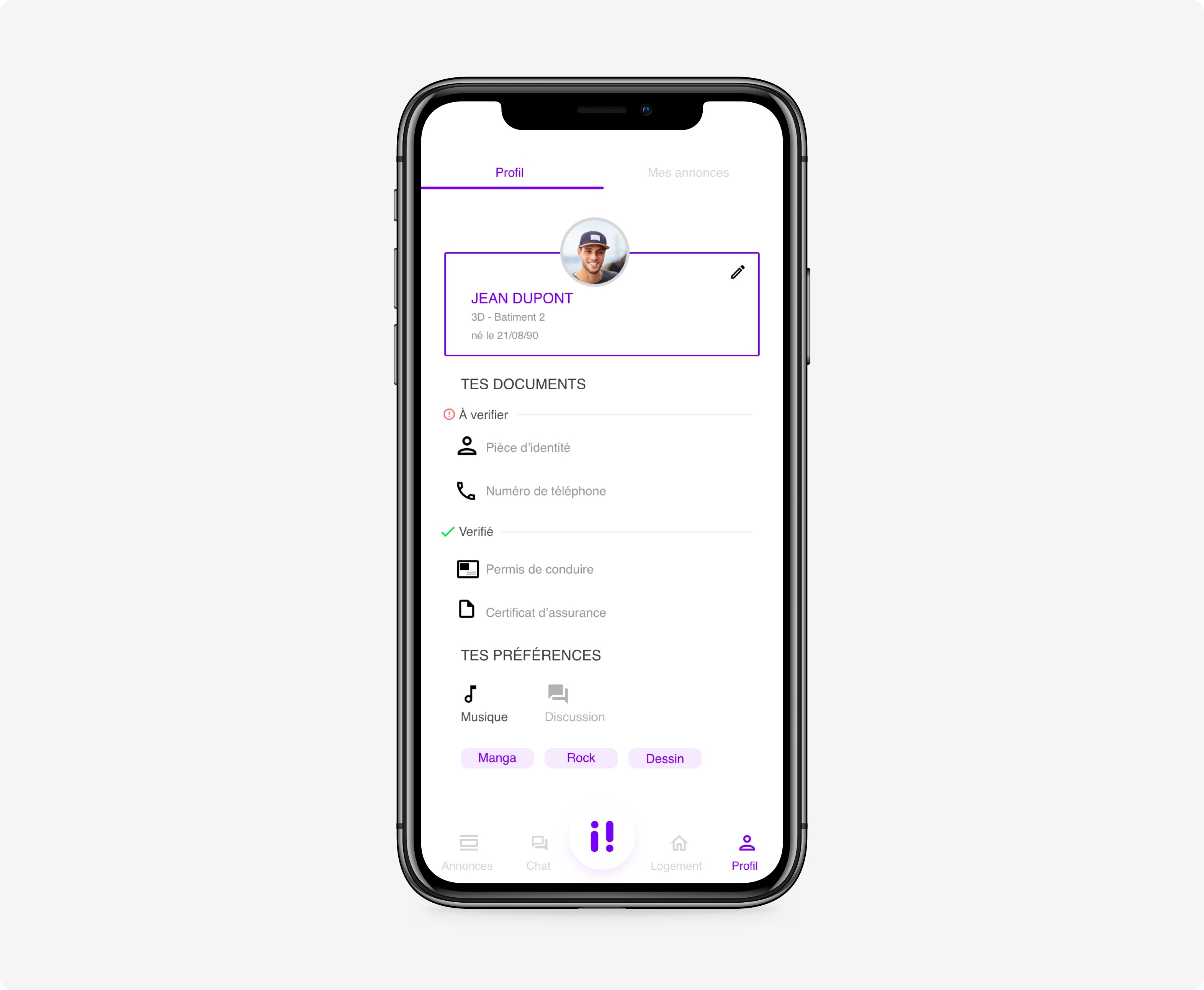
Conclusion
We have really thought about a project from A to Z. To conclude this project in three points, we have:
- Think housing and mobility with a whole system of car and eco-sharing.
- A simpler and more synchronous life for everyone in order to facilitate the movement and the daily life of each person according to their desires.
- More than a residence, a community.
- Think housing and mobility with a whole system of car and eco-sharing.
- A simpler and more synchronous life for everyone in order to facilitate the movement and the daily life of each person according to their desires.
- More than a residence, a community.
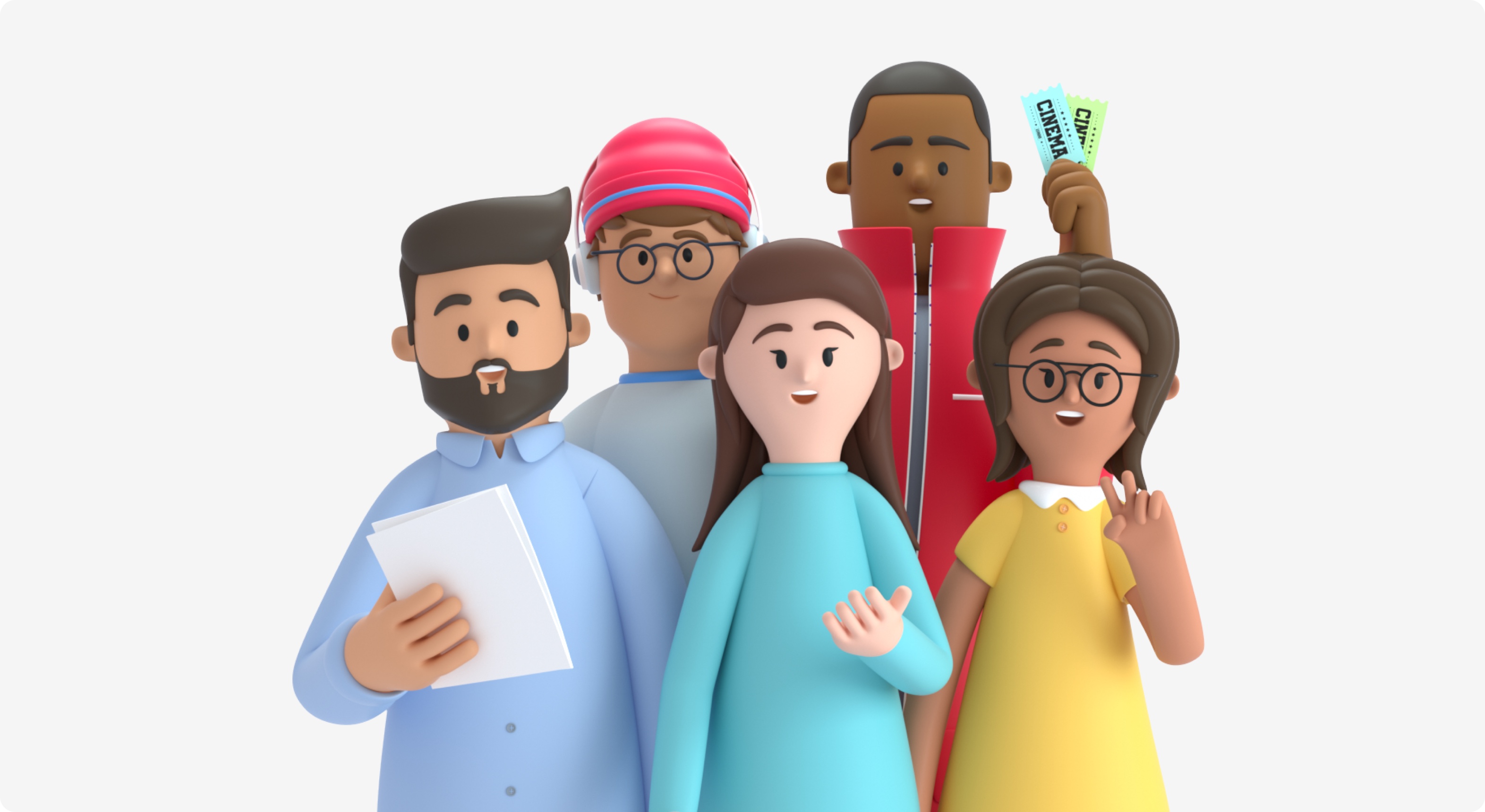
Opening
Elon Musk promised that Tesla will be able to deliver an autonomous complementary car service and by the end of 2020, he announced an autonomous taxi service to compete with Uber while allowing Tesla owners to earn money.
